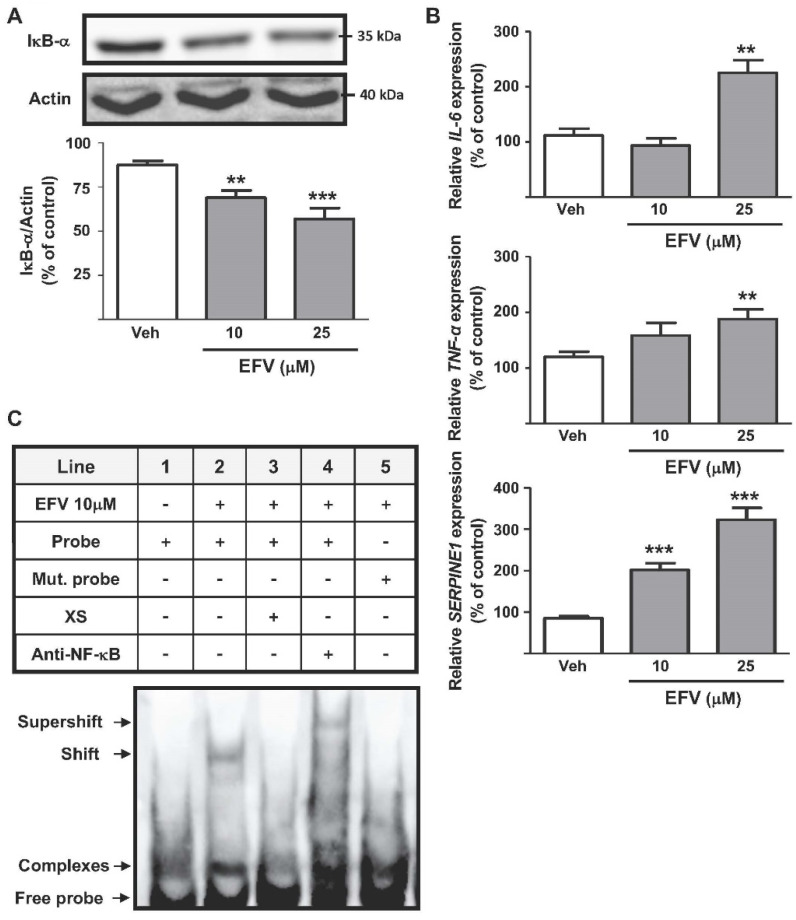Figure 1.
Efavirenz triggers the NF-κB pathway in Hep3B cells. (A) Representative Western Blot image of IκB-α and summary of densitometry data after 24 h treatment (n = 8). (B) Relative mRNA expression levels of the pro-inflammatory cytokines IL-6 and TNF-α (RT-PCR). Data were normalized versus the housekeeping gene β-actin (n = 5). (C) EMSA assay showing the binding of NF-κB (subunit p65) to the promoter of SERPINE1 in EFV-treated cells. Representative image of the different conditions detailed in the table (n = 5). Data (mean ± SEM) were calculated as a percentage of control (untreated cells) and analyzed by a one-way ANOVA multiple comparison test followed by a Newman–Keuls test (** p < 0.01, *** p < 0.001 versus the respective solvent).

